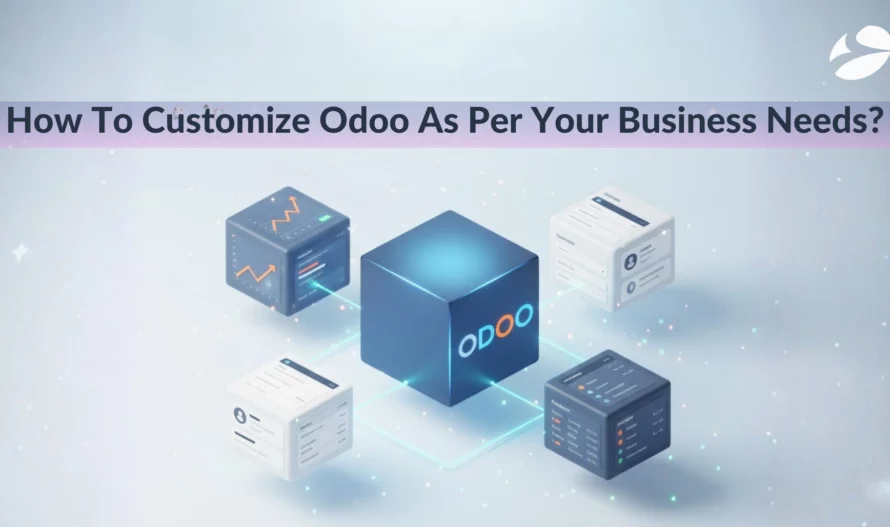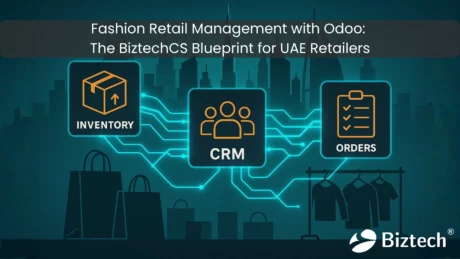147
Why and How to Customize Odoo for Your Specific Business Needs?
13 May, 2025
5 min read
147
13 May, 2025
5 min read

You’ve probably got that one person who does things completely differently from everyone else, but somehow they’re your top performer, so nobody wants to tell them to stop. Or maybe there’s a process that started as a temporary fix three years ago that’s now just… how you do things. And honestly? That’s how actual businesses work.
The trouble kicks in when you drop big money on software that expects you to be this perfectly organized, by-the-book operation. Like everything’s going to fit into their neat little boxes, but it doesn’t.
So many business owners get super excited about new ERP integration, but just three months in, they’re practically fighting with it every day. Half the team’s keeping spreadsheets on the side again (you know the ones I mean), and the other half is abandoning workflows that actually worked just because the software can’t handle them.
Odoo’s a bit different. It’s built on the idea that your software should bend to fit your business, rather than the other way around.
Many businesses are stuck with software that works well enough but not perfectly. This is the real problem, as they aren’t able to find the right key or element that could bring everything together and go from “almost right” to “perfectly aligned”.
It’s like having a car that only starts 90% of the time, making it technically a functioning vehicle. But you’re still using public transportation half the week because you can’t actually rely on it. So you create backup plans. Workarounds. You waste time every single day dealing with it.
Many companies have lived like this for a decade. They know their system’s terrible, but switching sounds like such a nightmare that they just don’t do it. Others jump ship every two years, convinced the next platform will be the magic solution.
Here’s the thing, though—there isn’t a magic solution. There’s just flexible software. And your competitors? They figured this out. They’re using odoo customization services to build systems that actually fit how they work, not the other way around.
Many companies believe they know what their business needs, but when they see the extensive list of features available on Odoo, they feel they need everything. Then six months later, half the modules are sitting there unused while everyone complains about how complicated it all is.
Here’s what actually works: Talk to your people. Not through some corporate survey that nobody fills out honestly. Actually sit down and have conversations.
Your warehouse guy? He probably has a whole notebook of workarounds he’s invented just to get through his day. Your sales team can tell you which CRM features they love and which ones they curse at. The accounting department knows which reports matter and which ones are just… there.
Note down these insights and get specific details. Instead of saying the inventory system could do better, talk about the actual problem, like why is my management system not notifying me if my stock is running low until there’s nothing left.
That level of detail—that’s what makes odoo customization services worth paying for.
Businesses can benefit from multiple forms of customization or a combination of multiple options. Here are a few ways in which a customized Odoo solution can be beneficial for your business:
Unnecessary menu features actually hinder the workflow.
Small stuff drives people bonkers. A form with 47 fields when you only ever use 8. Dashboards showing metrics nobody cares about while the three numbers you actually need are buried somewhere. Menus designed by someone who clearly never had to use them in a hurry.
These may look like cosmetic problems, but they aren’t, these are actual productivity killers. Fix them, and suddenly people stop wasting time clicking around and actually get work done.
This is where it gets good.
Maybe you need purchase orders over $5,000 to get two different approvals. Or automated emails when projects hit certain milestones. Or inventory alerts based on your specific business logic—not just quantity, but quantity plus pending orders plus seasonal trends plus whatever other factors matter to you.
Standard Odoo does these things, but it does them in a way. Not necessarily your way. Good odoo customization services take how you actually operate and build that directly into the system. Then it just happens automatically, every time, without someone having to remember.
Sometimes the standard stuff just doesn’t work for your industry.
Property management needs completely different features than manufacturing. Medical practices have compliance stuff that makes zero sense for retail. Construction companies track things that a consulting firm would never even think about.
Odoo customization services extend the platform’s capabilities while ensuring that the whole system is connected. This way, you’re not juggling five separate programs, but one coherent system.
Unless you’re starting completely fresh, you’ve got other tools like payment systems, shipping software, and an e-commerce platform you spent forever implementing. Some ancient legacy system that’s basically held together with hope and duct tape, but has a decade of critical data.
Quality odoo customization services make these things work together. Data syncs automatically. You stop typing the same customer information into three different places. Everything just… cooperates.
This is the tricky part, which functionalities to pick, which a business can live without, and more such questions come up when you are customizing your Odoo ERP module. Here’s how you can streamline the integration process:
Not all customizations matter equally. Some will completely change how you operate. Others sound cool in meetings but don’t really do much. Start with the stuff that frustrates your team every single day. You’ll see results immediately, people get excited, and that momentum helps you tackle bigger stuff later.
Don’t just dive into full development. That gets expensive fast. Mock things up first. Build prototypes you can click through. Show your team and get honest feedback before you’ve spent serious money. This will help you fully utilize the odoo customization services and build a system that works well for your business requirements.
Test thoroughly, both with humans and with machines. Your team will provide you with insights into what is working for them and what is not. Automated testing can provide insights into security gaps and other technical issues.
Do phased rollouts and let them get comfortable with the system before implementing it across the whole organization. This gives you space to fix issues based on real use instead of scrambling to patch things while everyone’s watching.
Odoo’s flexibility is impressive. But flexibility without strategy is just organized chaos.
The difference between an ERP that transforms your business and one that becomes an expensive regret? Usually comes down to how well the system adapts to your reality—not some idealized version of your business, but how things actually work.
BiztechCS delivers odoo customization services designed around your real operations. We spend time understanding your workflows and building solutions that remove friction instead of adding to it. From assessment through implementation and ongoing support, we make sure your Odoo system grows with your business.
Your business is unique—your ERP should be too. Schedule a consultation and find out how strategic Odoo customization services can transform your daily operations.

Artificial Intelligence (AI)
62
By Afzal Qureshi
05 Dec, 2025

Artificial Intelligence (AI)
72
By Afzal Qureshi
04 Dec, 2025

Odoo
446
By Uttam Jain
03 Dec, 2025